A study commissioned by European aviation trade associations has found that while rail travel has lower CO2 emissions per passenger kilometre than air travel, the benefits of shifting short-haul flights to rail are limited and are not a silver bullet for curbing emissions. The study also cautions that a shift can generate other environmental, social and economic costs, and could compromise efforts to decarbonise short-haul aviation through developing new technology. Its report says multiple factors need to be considered when assessing the optimal policy for short-haul aviation in Europe, including the environmental cost of building new rail infrastructure. The heads of the associations call upon policymakers to take all of this into account when considering how to optimise the decarbonisation of European regional transport. Another study in 2020 concluded a modal shift to railways could result in a potential reduction of 4 to 7 million tonnes of CO2 from intra-European aviation but only if the speed and quality of cross-border rail services improved and measures were taken to discourage air travel.
The results of the new study carried out by economics and finance consultancy Oxera for European industry associations covering airlines, air navigation, airports and manufacturers are published in a report, ‘Short-haul flying and sustainable connectivity’. It concludes that although a direct comparison of emissions shows rail has lower emissions per passenger than air travel, a modal shift from air to rail is complex and far from simple. If short-haul travel is banned then some passengers may choose to travel by car instead, which could lead to higher emissions, it says.
Among the arguments raised by the study is that for many short-haul routes with a lower traffic frequency, or at airports without a good high-speed rail connection, rail cannot be economically viable as it is based on a different business model with lower occupancy and speed rates. The industry also points to the importance of regional airports and airlines in ensuring local economies are able to access bigger economic centres.
“They are key to the EU’s cohesion policy and essential tools to reduce territorial and social inequality,” said the associations in a joint statement.
The Oxera report says building new railway lines has a high environmental cost due to the carbon emissions associated with cement and steel production, along with emissions from the fuel used for construction of infrastructure, plus significant impact on biodiversity and damage to wildlife habitats. The study also found there is unlikely to be sufficient rail capacity to accommodate all air passengers on a given route, meaning new railway lines would need to be built and new rolling stock procured.
“This would have significant environmental impacts, and the carbon payback period for such an investment needs to be considered alongside the timeline in which short-haul air travel is expected to decarbonise,” says the report.
It also argues that the gap over time between air and rail CO2 emissions will be reduced as new short-haul hybrid-electric aircraft start to be used on regional routes by 2030 and becoming more widespread by 2040. “As the routes most likely to decarbonise first, short-haul flights within Europe will play a significant role in rolling out lower carbon disruptive technologies and thereby accelerating wider aviation decarbonisation,” commented the associations.
Overall, concludes the report, all these factors need to be taken into account in deciding on the optimal policy for short-haul aviation in Europe. “Providing a range of transport options and encouraging intermodality between them is likely to offer the best solution from a social, economic and environmental perspective.”
The 2020 study carried out for campaign group Transport and Environment found that no European plan exists to improve the speed and quality of international rail services on distances between 200 and 1,000 km. Proposed improvements of railway services mainly focus at national level, with some exceptions for cross-border connections, which reflects the organisation of the railway sector in national companies and a strong involvement of national governments.
The study looked at the benefits of having high-speed rail between most large European cities, as well as the net speed of trains increasing by 10% on all connections competing with aviation and 50% more night trains to offer an alternative for daytime aviation trips. It concluded that around 4 to 7 MtCO2 from intra-European aviation may be avoided by a modal shift from air to rail if these approaches could be met. This corresponds with 6-11% of the CO2 emissions from intra-EU-31 aviation and with 2-4% of CO2 from all aviation fuel consumption in EUR-31, alongside the added benefit of reducing aviation’s non-CO2 climate impacts. To achieve these emission reductions would require both to improve speed and quality of international rail services and to discourage air travel.
A white paper published last year by global consultancy Egis, ‘The future of aviation in a world of sustainable travel’, argued that while high-speed rail projects boast many economic and social benefits, they come at a cost correlated to the transport distance and network, with a need for physical infrastructure along the route and the physical restrictions of geography and urban areas. As most projects today need to be started from scratch, this exposes governments and financers to lengthy returns on investments, considerable risks and high costs. The UK’s High Speed 2 500km rail project linking the north and south of England has an estimated $233 million cost per km, more than twice originally budgeted.
By contrast, while air transport requires significant infrastructure at points of arrival and departure (airports) and to a certain extent along the route (air navigation services), it can currently offer considerably larger economies of scale and greater flexibility at less of a financial and commercial risk than high-speed rail, says Egis.
However, it acknowledges the size of high-speed rail networks is growing considerably in Europe, with Spain, France, Germany and Italy adding a total of 800 high-speed trains to the network by 2030 and for over €100 billion to be invested on an EU level. In parallel, the European long-distance passenger-rail market is going through a phase of mass liberalisation through a regulatory overhaul that will present incumbents and new entrants with the opportunity to open new untapped routes between towns, cities and countries.
High-speed trains are being considered as a viable substitute to short-haul flights more seriously than ever before, said the paper.
However, said William McMaster, Senior Consultant, Aviation at Egis and author of the paper: “While a modal shift from air to rail is increasingly considered as a means of reducing transport emissions, the idea is not as simple as it sounds.
“We have seen opinion polls in Europe showing that the population generally favours short-haul flight bans, and an even greater majority support a carbon tax on flights. Yet paradoxically, only one in two travellers would be willing to take a greener mode of transportation if it took longer than the typical flight – showing that more people want action taken than are willing to act themselves. This suggests demand alone may not be a strong driver for change.”
Yet the major investment and regulatory liberalisation that are taking place in the high-speed rail sector have seen highly disruptive effects on air transport routes, pointed out McMaster. Following 25 years of Eurostar services connecting London with Paris in 2 hours and 16 minutes, a 44% reduction in airline seats (pre-pandemic) has resulted over a period during which air passenger numbers grew by over 200%, he reported, with similar trends elsewhere in the world, notably China.
“However, road and air transport investments could be more attractive than high-speed rail when physical aspects like geography or the economics of public budgets come into play,” he added. “The economic characteristics and overall lower net present value of high-speed rail mean that these networks may struggle to provide a compelling business case.”


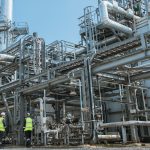
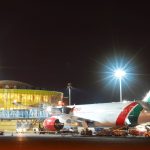
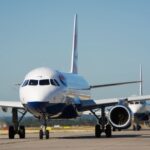
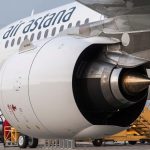

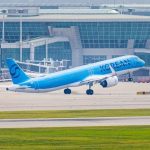



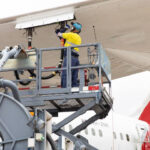


More News & Features
Cirium analysis challenges assumptions between aviation growth and environmental impact
Catagen launches SAF production company and signs offtakes with Ryanair and Shell
NATS survey shows a continuing disconnect of public attitudes to the environmental impact of flying
SWISS integrates first supplies of Synhelion solar SAF into flight operations
Aviation and fuel industries call for urgent EU policy action on SAF deployment
Air France-KLM becomes the first airline group to join the new EU flight emissions labelling scheme